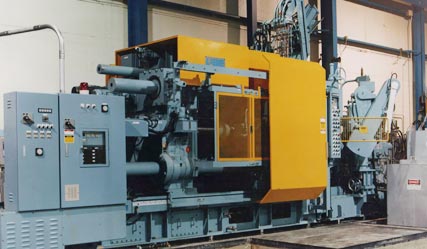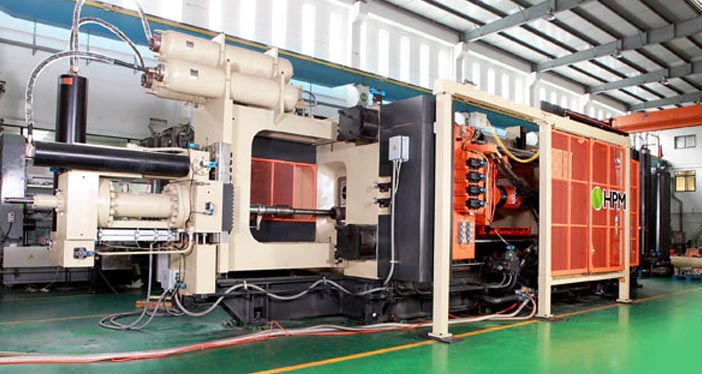This article outlines a general die-cast machinery process. It is intended for an audience with scant knowledge of this issue, or for machinery operators beginning training with this type of manufacturing equipment.
The die-cast machinery process converts a raw material into a consumer product. The process involves melting the raw material and forcing its passage into a mold to form a product in accordance to the shape of the die.

The process starts by placing the raw material into a melting pot. The melting pot consists of a material capable of withstanding long periods of heat stress. When the raw material becomes molten, a plunger forces a small amount of the molten material through a gooseneck. The gooseneck is heated and remains so because of its close proximity to the melting pot. The gooseneck consists of the same material as the melting pot and connects it to a sprue. The sprue is constructed of the same material as the die. This material also withstands high amounts of heat stress, but is aided by a coolant. This results in a wider variety of choices for a less expensive die material.
A sprue block, containing orifices for the sprue heaters, encloses the sprue. The sprue heaters are similar to thermocouples and ensure the sprue block remains heated throughout the process. The heated sprue block thus keeps the sprue at a desired temperature range. The molten material finishes its journey into the mold. The mold usually consists of a top and bottom block. The top block is part of a vertical lifting operation, while the bottom block remains stationary.
Now, let’s demonstrate this process in a reality situation. The process involves converting lead (raw material) into battery cable terminals (consumer product).

The block of lead is placed in the melting pot. The molten lead is ready for conversion when its temperature is in the 750 degree Fahrenheit range. The machine operator activates the process and the metal plunger pushes a small amount of molten lead through the entrance of the gooseneck. The molten lead travels up the gooseneck, through the sprue, and into the mold. The lead solidifies in the cooled mold, and the operator signals he/she is ready to remove the product from the mold. The excess lead drains back into the sprue and down the gooseneck. The operator lifts the top block of the mold, and with a gloved hand, removes the battery cable terminal. Any excess flash is trimmed from the battery cable terminal, and after the product has cooled, it is ready for the packaging process.











 How to Make Linux Work with WIFI
How to Make Linux Work with WIFI